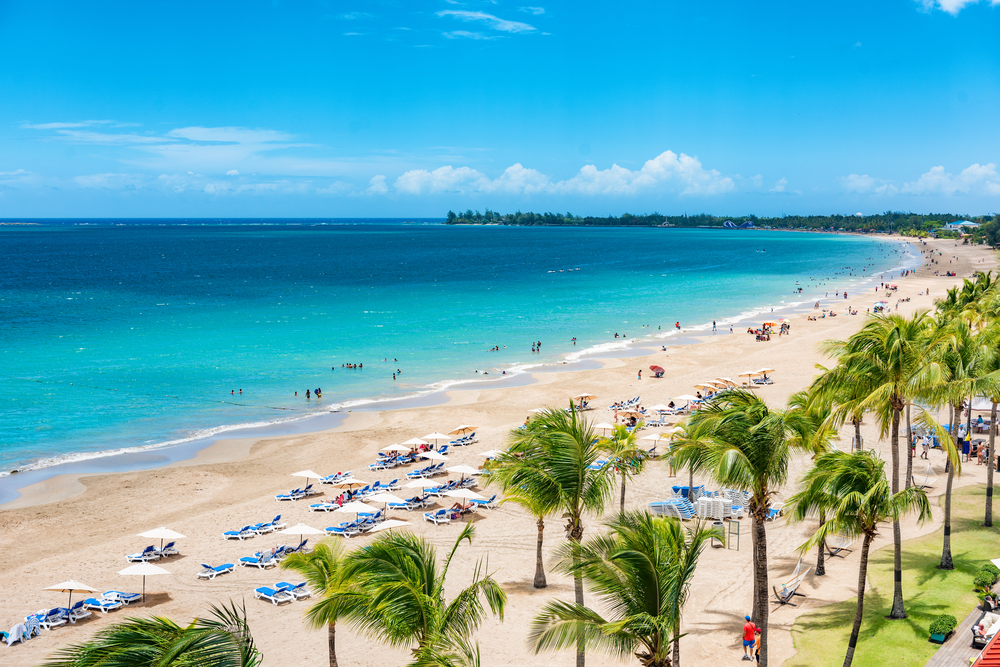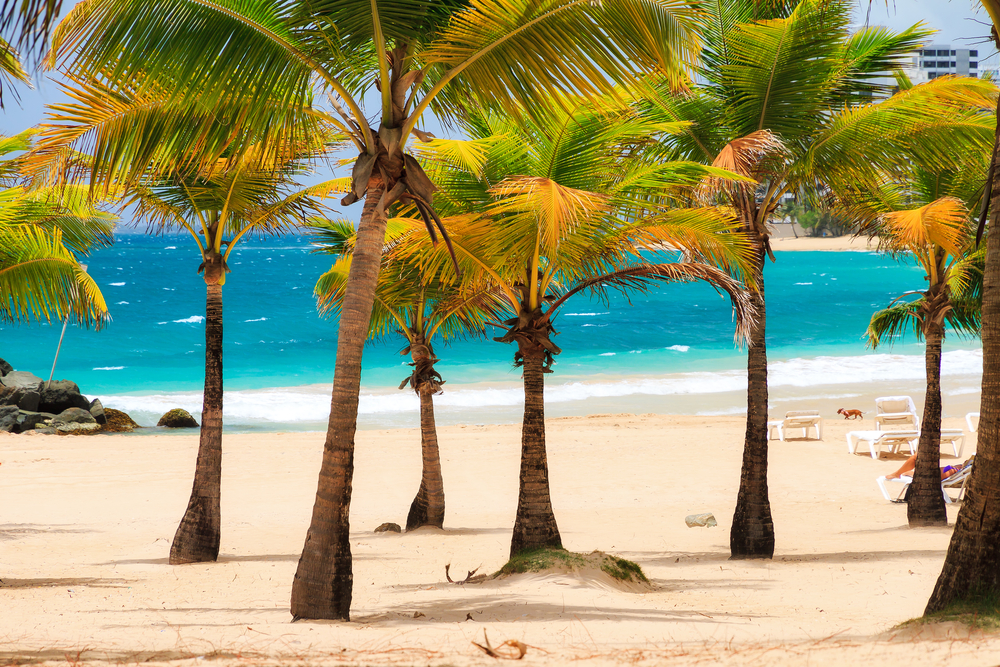Is Puerto Rico Considered International Travel? If you’re planning a trip to Puerto Rico, you may wonder whether it is considered international travel. The answer is no; Puerto Rico is not considered an international destination for travelers coming from the United States. This is because Puerto Rico is a United States territory and is treated as domestic travel.
As a result, if you’re a U.S. citizen, you don’t need a passport to travel to Puerto Rico, and you won’t have to go through customs or immigration. You won’t need to exchange your currency or update your cell phone plan for international service. This makes traveling to Puerto Rico a convenient and hassle-free experience for U.S. citizens, as they can enjoy an unforgettable Caribbean getaway without worrying about the logistics of international travel.
It’s worth noting that even if you take a cruise ship to Puerto Rico, your trip will still be considered domestic travel as long as you don’t land in a foreign country or port before arriving in Puerto Rico. This means that you can explore the beauty of Puerto Rico’s beaches, rainforests, and historic landmarks without any additional travel requirements.
Understanding Puerto Rico

Puerto Rico is a Caribbean island, an unincorporated territory of the United States. It has a unique political status that sets it apart from the 50 states, and it is not considered international travel for US citizens. However, traveling to Puerto Rico will be considered international travel if you are from outside the US.
Culture and Language
Puerto Rico has a rich cultural history that is influenced by its Spanish and African heritage. The official languages of Puerto Rico are Spanish and English, and most of the population speaks Spanish. However, English is widely spoken in tourist areas.
Geography
Puerto Rico is an island located in the Caribbean Sea. It is the smallest of the Greater Antilles and is situated east of the Dominican Republic and west of the US Virgin Islands. The island is divided into five regions: San Juan, Ponce, Culebra, Rincon, and Vieques. The west coast of Puerto Rico is known for its beautiful beaches, while the central region is home to mountains and rainforests.
Historical Perspective
Puerto Rico has a rich history that dates back to the pre-Columbian era. The island was colonized by Spain in the 16th century and remained under Spanish rule until 1898, when it was ceded to the United States after the Spanish-American War. Since then, Puerto Rico has been an unincorporated territory of the United States.
Natural Disasters
Puerto Rico is prone to natural disasters such as hurricanes, earthquakes, and floods. It is important to be aware of the emergency procedures in case of a natural disaster.
Outdoor Activities
Puerto Rico is a great destination for outdoor enthusiasts. The island offers a variety of activities such as hiking, snorkeling, and surfing. The El Yunque National Forest is a popular destination for hiking, while the beaches of Culebra and Vieques are great for snorkeling.
Scenery
Puerto Rico is known for its beautiful scenery, which includes beaches, mountains, and rainforests. Some of the most popular scenic destinations include Old San Juan, El Yunque National Forest, and the beaches of Culebra and Vieques.
Waste Management
Puerto Rico has struggled with waste management issues in the past. However, the government has taken steps to improve the situation, and visitors are encouraged to recycle and dispose of waste properly.
Public Transportation
Puerto Rico has a public transportation system that includes buses and taxis. However, renting a car is a popular option for visiting the island.
Budgeting for Your Trip
Puerto Rico can be an affordable destination for travelers on a budget. Some budgeting tips include using points and miles, staying in guesthouses or hostels, and eating at local restaurants.
Cell Phone Plan
Cell phone coverage in Puerto Rico is good, and most major carriers offer service on the island. However, checking with your carrier about international roaming fees is important.
Hats and Masks
Puerto Rico can be hot and humid, so bringing a hat and sunscreen is recommended. Masks are also required in certain indoor settings due to COVID-19.
Traveling to Puerto Rico

If you are planning a trip to Puerto Rico, you should know a few things before you go. This section will cover important information about air travel, entry requirements, customs and immigration, domestic vs international travel, Covid-19 measures, currency, and exchange.
Air Travel
Puerto Rico is served by several airports, including Luis Muñoz Marín International Airport (SJU) in San Juan, which is the largest airport on the island. Other airports include Rafael Hernández Airport (BQN) in Aguadilla, Mercedita Airport (PSE) in Ponce, and Antonio Rivera Rodríguez Airport (VQS) in Vieques. Major airlines such as Delta, American, and United offer flights to Puerto Rico from several cities in the United States.
Entry Requirements
As a United States territory, Puerto Rico has the same entry requirements as the mainland United States. U.S. citizens do not need a passport to travel to Puerto Rico but need a valid government-issued photo ID, such as a driver’s license. Non-U.S. citizens will need a passport and may also need a visa, depending on their immigration status.
Customs and Immigration
When you arrive in Puerto Rico, you will go through customs and immigration, just like you would when entering the mainland United States. You will need to present your travel documents, including your passport (if applicable), and declare any goods you are bringing into the country.
Domestic Vs International Travel
For U.S. citizens, travel to Puerto Rico is considered domestic travel. However, for non-U.S. citizens, travel to Puerto Rico is considered international travel. This means that non-U.S. citizens may need additional travel documents and may be subject to different entry requirements.
Currency and Exchange
The currency used in Puerto Rico is the U.S. dollar, so there is no need to exchange currency if you are traveling from the United States. However, if you are traveling from another country, you may need to exchange currency before you arrive. There are several currency exchange offices throughout Puerto Rico and ATMs where you can withdraw cash.
Overall, traveling to Puerto Rico is relatively straightforward for U.S. citizens, but non-U.S. citizens should be aware of the different entry requirements and travel documents they may need. Additionally, all travelers should be aware of the Covid-19 measures in place and plan accordingly.
Tourist Attractions
San Juan
San Juan, the capital of Puerto Rico, is a vibrant city with a rich history and culture. The city is home to many tourist attractions, including Old San Juan, a UNESCO World Heritage Site. Old San Juan is a charming neighborhood with colorful buildings, cobblestone streets, and impressive forts such as El Morro and San Cristobal. You can also visit museums, art galleries, and enjoy delicious local cuisine in San Juan.
Ponce
Ponce, located on the southern coast of Puerto Rico, is known for its Spanish colonial architecture and historic landmarks. The city is home to the Ponce Museum of Art, which houses a vast Puerto Rican and European art collection. You can also visit the historic firehouse Parque de Bombas, the colorful Casa Wiechers-Villaronga, and the beautiful La Guancha boardwalk.
Culebra and Vieques
Culebra and Vieques are two small islands off the eastern coast of Puerto Rico. They are known for their stunning beaches, crystal-clear waters, and natural beauty. Flamenco Beach in Culebra and Playa Caracas in Vieques are two of the most popular beaches in Puerto Rico. You can also go snorkeling, scuba diving, and kayaking in Culebra and Vieques.
Rincon
Rincon, located on the western coast of Puerto Rico, is a popular surfing destination. The town is known for its laid-back vibe, beautiful beaches, and stunning sunsets. You can also visit the El Faro Lighthouse, the Rincon Art Walk, and the Tres Palmas Marine Reserve.
Aguadilla
Aguadilla, located on the northwest coast of Puerto Rico, is a town known for its beautiful beaches, surfing, and outdoor activities. You can visit the Crash Boat Beach, the Las Cascadas Water Park, and the Punta Borinquen Lighthouse.
West Coast
The west coast of Puerto Rico is known for its stunning beaches, scenic drives, and beautiful sunsets. You can visit the Guajataca Tunnel, the Guajataca Forest Reserve, and the Maricao Forest Reserve.
Visitors’ Experiences
Puerto Rico offers visitors a unique and unforgettable experience. From the historic landmarks and cultural attractions to the beautiful beaches and natural beauty, there is something for everyone in Puerto Rico. Whether you are interested in history, art, food, or outdoor activities, you will find it in Puerto Rico.
Travel Options within Puerto Rico
If you’re planning to travel within Puerto Rico, there are various options. You can rent a car, take public transportation, or use ride-sharing services. Here’s what you need to know about each option.
Renting a Car
Renting a car is a popular option for tourists in Puerto Rico. There are many car rental companies to choose from, including major international brands. You can rent a car at the airport or in major cities like San Juan. However, keep in mind that traffic in Puerto Rico can be heavy, especially during rush hour. Also, some roads can be narrow and winding, so driving carefully is important.
Public Transportation
If you prefer not to drive, public transportation is another option. The Metropolitan Bus Authority (AMA) operates buses throughout the island, including San Juan and other major cities. Fares are affordable, and the buses are air-conditioned. However, keep in mind that buses can be crowded during peak hours. Additionally, some routes may not run as frequently on weekends or holidays.
Ride-Sharing Services
If you’re looking for a more convenient option, ride-sharing services like Uber and Lyft are available in Puerto Rico. These services are popular among tourists and locals alike. They offer a convenient way to get around, especially if you’re traveling in a group. However, keep in mind that ride-sharing services can be more expensive than other options, especially during peak hours.
Domestic Travel
If you’re traveling to other parts of Puerto Rico, there are various options available. You can take a domestic flight, book a ferry, or use a private shuttle service. Domestic flights are available from San Juan to other cities like Ponce and Mayaguez. Ferries are available from Fajardo to other islands like Vieques and Culebra. Private shuttle services are also available and can be a convenient option if you’re traveling in a group.
Overall, there are various travel options available in Puerto Rico. Whether you choose to rent a car, take public transportation, or use ride-sharing services, there are options to suit every budget and preference.
For More Info : https://greenbookglobal.com/
Do US citizens need a passport for Puerto Rico?
Since Puerto Rico is a Free Commonwealth of the United States, US citizens do not need a passport to travel to Puerto Rico. A government-issued ID such as a driver’s license or a birth certificate is enough to enter the island.
Do you need to go through customs when traveling from the US to Puerto Rico?
No, you don’t need to go through customs when traveling from the US to Puerto Rico. Since Puerto Rico is a US territory, it is considered a domestic destination, and you don’t have to clear customs or immigration.
Can non-US citizens travel to Puerto Rico?
Yes, non-US citizens can travel to Puerto Rico, but they need a valid passport and a visa if required. The travel requirements for non-US citizens are the same as for any other US state.
Can you use a US driver’s license to travel to Puerto Rico?
Yes, you can use a US driver’s license to travel to Puerto Rico if you are a US citizen. A driver’s license is considered a valid form of government-issued ID, and you don’t need a passport to travel to Puerto Rico.